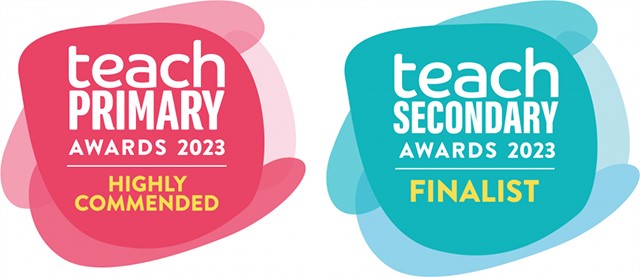We Care About Your Privacy
By clicking “Accept all”, you agree to the storing of cookies on your device to enhance site navigation, analyze site usage, and assist in our marketing efforts. View our Privacy Policy.
What makes the Learning Village a good tool for SEND learners?
The Learning Village is ideal for SEND and EAL because it:

Let’s take a closer look at some of these elements.
It is recommended that when teaching SEND learners, an organized classroom is maintained and distractions limited: SEND learners benefit from a clear, systematic learning environment and methodology. The Learning Village is designed to allow learners to immerse themselves in one consistent language-learning strategy that is presented progressively and clearly.
On the Learning Village, language-learning tasks are broken down into small, manageable elements of vocabulary and language structure. These build one on another, progressively. This ensures that new language is introduced one small step at a time, layering the language structure around the learnt vocabulary.
Learning in the Learning Village is image- and topic-based. The necessary language is pre-taught and learners are supported with clear visuals.
The Learning Village presents the same learning in many different ways, to reinforce content. For example, learners are asked to match an image to text, audio to text (or vice versa) or to spell and order words on the topic that is presented.
Pre-teaching and modelling is a large part of what the Learning Village does.
“Pre-teaching activities aid students with an SpLD [specific learning difference] to cope with listening and reading texts and with the difficulties they might experience in producing oral and written discourse.” - Kormos, J & Smith, A M (2012). Teaching foreign languages to learners with specific learning differences. Bristol. Multilingual Matters.
Learning on the Learning Village is presented in repeated patterns of language (for example, ‘Have you got any coffee?’ ‘Have you got any milk?’ Or ‘There is a farm by the volcano’, ‘There are some houses by the volcano’), supporting learners with their use of vocabulary in a number of modalities. Once learners can use those structures (‘Have you got any…’ or ‘There is/are…’), they can use them with a multitude of other words.
The Learning Village incorporates a translation tool, which provides translation into the 150 most commonly used languages. Audio translations are also supported for around 10 languages. Referring back to a learner’s home language can be a vital part of the language-learning process for learners with SEND.
SEND EAL learners often need explicit explanation on how to pronounce sounds and how these correspond to letters and spelling rules. They also need to hear and physically experiment with the sounds. The Learning Village Phonics Journey is a full, systematic phonics programme. Throughout the Learning Village, the microphone and recording facility allows learners to hear and practise word pronunciation.
Scaffolding is of vital importance for EAL learners with SEND when approaching writing tasks. The Learning Village offline Scaffolding Resources take learners from short sentence-level work, up to longer, more complex, independent pieces of work. Based on simple, engaging, original texts, the resources make careful use of colour-coding, templates and graphic organisers as visual structural aids for reading and writing.
During this stage, the learner has the chance to connect to their own language and understand the images/context of the lesson. The teacher and learner can assess their own understanding of the vocabulary or language structure presented. This connection is fundamental to learners with SEND, who need solid connection activities before starting to learn.
This stage allows the teacher to model the language and repeat the learning as many times as necessary, to support the learner with memorising the vocabulary or language structure. Methods include a lively combination of showing and hiding text and repeating the oral model of the text. Not only does this support the learner with remembering vocabulary and language structures, it also models ‘how to learn’, which is fundamental to the independent learning process.
In this stage, learners interact with each other to practise the exact language that has been modelled – it’s a supportive way for SEND learners to take the next small step. This stage involves collaborative flashcard games that encourage learners to interact and to enjoy learning together. It is designed to raise learner self-esteem in speaking and ‘having a go’, as well as to practise language.
By the time learners reach this stage, they will be ready to relate their speaking and listening skills to writing. This is again achieved through modelling: the teacher writes (models) one word or language structure, giving the learners some time to remember it before removing it from the board. Learners then have a go at recreating the word or structure on a mini-whiteboard and then peer-mark and share examples.
The Learning Village allows learners to be successful at every level. Teachers can customise each learner’s starting points and progress is based on individual assessment. If a learner feels unable to answer at any point, a ‘Learn’ button is available: the system doesn’t automatically give the correct answer, but instead, provides a link back to the original learning, so that the learner can find the answer themselves. Nothing is presented that hasn’t already been taught: the answer is ALWAYS there to be found.
The Learning Village raises learner confidence. It’s designed so that every learner can achieve small milestones, like making virtual friends, upgrading their ‘treehouse’ or maintaining the happiness of their ‘villagers’. These small goals are one of the most important elements of supporting EAL learners with SEND, allowing them to gain a clear picture of their own success, as they step through the programme independently.
Arrange an initial conversation

Learning Village wins not just one, but TWO awards for its SEN provision!